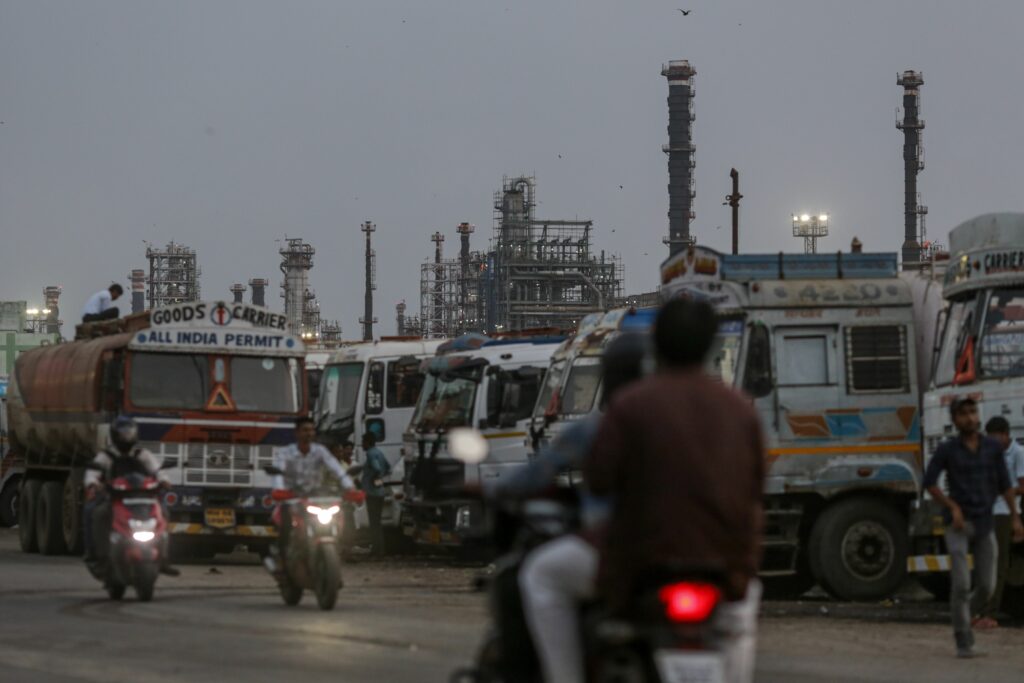The world is in the midst of perhaps the last major refining boom, as India ramps up production capacity to meet its growing thirst for fossil fuels.
The South Asian country has begun major construction work on a refinery to increase production of traditional transportation fuels such as gasoline and diesel, which will increase production capacity over the next five years. This could increase by more than 20%. Rystad Energy estimates the additional costs at approximately $60 billion.
advertisement
Continue reading below
This is a rare boost for the global refining industry, which is in decline in the United States and Europe, while China's huge sector is adapting to Beijing's green goals after years of development turning it into a processing powerhouse. In contrast, India's growing transport needs and slow adoption of electric vehicles will likely keep demand for gasoline and diesel high over time.
“There is no expansion in the West,” said Giovanni Serio, head of research at Vitol Group. “We will continue to expand mainly in regions where demand is growing. India is a country where we see continued growth of over 200,000 barrels per day between now and the next four to five years.”

India's refining capacity is expected to increase by 56 million tonnes by 2028, Petroleum Secretary Rameshwar Teri said last month, without providing details. This represents a 22% increase in overall production capacity, or 1.12 million barrels per day.
The government has not provided details on how it will reach that high standard. According to Bloomberg calculations, state-run refineries have announced expansions of about 50 million tonnes that could fit into Teli's schedule. The project, representing approximately 37 million tonnes, is scheduled for commissioning between 2024 and 2026, but the completion of the remaining capacity remains uncertain, with additional plans and study stages still in progress.
The largest is Indian Oil Corporation's Panipat plant in Haryana, which will add 10 million tonnes and is scheduled to start operations late next year. Hindustan Petroleum Corporation's new Barmer refinery in the northwestern state of Rajasthan is the next largest at 9 million tonnes. Development is expected to be completed in 2024 and the facility to be fully operational by 2025.
Minor expansions are being carried out at the refineries in Visakhapatnam and Gujarat, and the Barauni plant in Begusarai, Bihar.
Still, Vitol's Serio says 56 million tonnes is not an unreasonable number. “Having said that, from our standpoint, when we look at the potential of these projects, we think it's likely about half of that right now.”
State-run refineries are likely to bear most of the responsibility. Reliance Industries Ltd., the largest private oil processor and owner of the giant Jamnagar complex, is looking to replace gasoline and diesel with cleaner fuels to take advantage of the transition to greener energy. There is.
“India has historically lagged behind in adding new refinery capacity and will need some catch-up to become more self-sufficient,” said Sushant Gupta, an oil analyst at Wood Mackenzie. . The consultant expects the country's demand to increase by 1.3 million barrels per day by 2030.
The Asian country not only meets its own demand requirements, but also plays an important role in transporting fuel to other regions such as Europe, especially after Russia's invasion of Ukraine disrupted diesel supplies.
advertisement
Continue reading below
“Good opportunities are building for export,” said Kumodo Kumar Jain, senior vice president of downstream research at Rystad Energy. “A lot of refineries are closing down in Europe and everyone in the market is trying to capture that.”
capacity boost
The International Energy Agency estimates India's production capacity will increase by 1 million barrels per day over the six years to 2028, bringing throughput to 6.2 million barrels per day. This represents a 19% increase in total refining volume. China is increasing daily production, but the overall production increase is her 8%. The Middle East is about 9%.
Although the growth rate is large, India's refining industry still looks small compared to most other countries, including the US and Europe, which are cutting capacity. China's sector is more than three times larger.
India's additional plans also include a petrochemical complex, but most of its production capacity will be for transportation fuels. As of April 1, 2023, the country's overall refining capacity was approximately 254 million tons, according to government data.

“Given that India is still a developing economy, it is important to note that the country remains focused on investing in traditional fuels while at the same time transitioning to green energy,” said Dylan Sim, oil analyst at FGE. “It makes sense to get the basics in place.”
India also has plans to increase its liquefied natural gas production capacity, and although it remains heavily dependent on coal for power generation, the country aims to join the energy transition and has set a net-zero target by 2070. ing.
© 2024 Bloomberg

